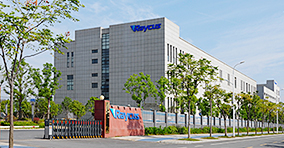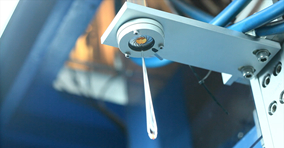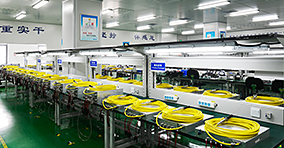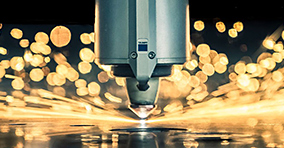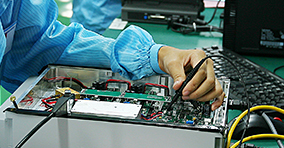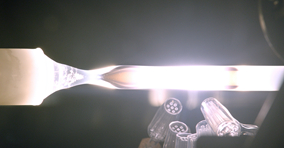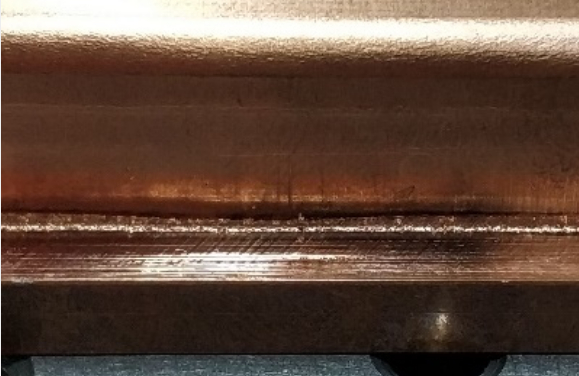[Rayclass | Rui Class] Issue 4: Make copper welding within 1mm simple and efficient
What welding method is used for copper?
Can fiber lasers be used for copper welding?
What should we pay attention to during the welding process?
This issue [Rayclass | Rui class]
Testing with four test protocols
Trying to find a suitable
Copper welding scheme within 1mm
Copper has very good ductility, electrical conductivity, thermal conductivity, and certain corrosion resistance. It has good elasticity, friction resistance, and abrasion resistance in the physical structure. It is mainly used to make generators, bus bars, cables, and switching devices. Electrical equipment such as transformers and heat-conducting equipment such as heat exchangers, pipes, and flat-plate collectors for solar heating devices are widely used in the construction industry, electrical, mechanical manufacturing, and defense industries. According to the research results in the paper “Copper Laser Welding Process and Application Research”, the current industrial application of copper and copper alloys is shown in Figure 1.
Figure 1 Proportion of copper and copper alloys in industrial applications
Take the computer CPU that is familiar in our life as an example, it generates a large amount of heat during work. If the heat cannot be quickly dissipated, it will affect the performance of the CPU or even damage it. The other side is copper, and the copper radiator needs to be soldered.
Figure 2 CPU cooling structure
With the increasing application of copper, the quality of copper’s connection is getting higher and higher. The commonly used method is welding connection. At present, copper welding mainly focuses on traditional friction stir welding, argon arc welding, ultrasonic seam welding, Brazing, laser welding, etc.
Since copper has a high thermal conductivity, high reflectivity and high expansion coefficient of an infrared laser, at room temperature copper absorption of infrared laser is about 5%, was heated to near the melting point increases dramatically to approximately 20% absorption rate, so the When fiber laser welding copper, the energy at the bottom of the small hole is likely to be too large, which leads to excessive expansion of the bottom of the small hole and causes instability of the small hole, resulting in weld seam defects .
In general, there are several problems with fiber laser welding of copper:
1) Large laser energy density required;
2) easy to produce stomata and splashes;
3) Poor stability and poor molding during welding;
4) Weld joint performance is poor.
To address these issues, the current main control methods or welding methods are as follows:
Compared with traditional laser welding, laser wire filler welding has greater adaptability to workpiece processing and assembly gaps. At the same time, by adjusting the wire filler composition, the microstructure and performance of the weld zone can be controlled. Its welding form is shown in Figure 3.
Figure 3 Schematic of laser filler wire welding
Laser-arc hybrid welding combines the advantages of the two independent heat sources of laser and arc (such as the laser heat source has high energy density, excellent directivity, and the characteristics of transparent media conduction, and the arc plasma has high thermo-electric conversion Efficiency, low equipment cost, running cost, mature technology, etc.), greatly avoiding the shortcomings of the two (such as laser energy loss caused by high reflectivity of metal materials to laser, high equipment cost of laser equipment, Low electro-optical conversion efficiency, low energy density of the arc heat source, poor discharge stability at high speeds, etc. At the same time, the organic combination of the two has derived many new features (high energy density, high energy utilization, high Arc stability, low tooling preparation accuracy, and surface quality of the workpiece to be welded, etc.), making it a new type of welding heat source with great application prospects. Its welding form is shown in Figure 4.
Figure 4 Schematic of laser-arc hybrid welding
After the surface treatment of copper, the absorption rate of the fiber laser will increase significantly, which will improve the solderability of copper. At present, the main treatment methods include surface blackening treatment, adding additional light-absorbing material coating, and so on.
At room temperature, the absorption rate of copper at a wavelength of 532nm reaches 30% to 40%. Based on previous scholars’ research on the application of laser in copper welding:
(1) Focusing the laser with a wavelength of 532nm and a laser with a wavelength of 1030nm at the same position on the workpiece surface to weld the copper, it was found that the spatter can be significantly suppressed, and the formation of the weld surface was significantly improved, and the repeatability of the process was greatly improved.
(2) Sine modulation of the laser output power from 400Hz to 600Hz, and then welding the copper, it was found that the stability of the welding process was significantly improved, the shape of the weld was regular, and the number of pores in the weld was greatly reduced.
Although the above-mentioned several processing methods have different good effects, they have different degrees of complexity in equipment or processes, and the cost performance is not high when welding some simple workpieces.
The process is too complicated? PASS!
High equipment cost? PASS!
For tailor-made welding of copper plates with a thickness of less than 1mm, welding of fillet joints, etc.,
Is there a simpler welding process?
One hundred questions is worse than one test,
Then let’s start the welding test now:
Equipment : Ruike laser RFL-C6000 with 100μm core fiber and KUKA robot
Welding head : Prector YW52 laser welding head, 125mm collimating lens, 250mm focusing lens
Material and joint form : copper, corner joint, as shown in Figure 5.
Figure 5 Joint form and welding method
Specific welding parameters were tested using the following four:
After welding according to the above welding equipment and four sets of welding parameters, we get four
Group parameter welding effect:
It can be seen from the figure that the appearance of the welds formed by different welding parameters are different: the burst of the No. 1 weld is very serious and the forming is poor;
There are a few explosion holes in weld No. 2 and the forming is poor;
No burst holes were found in weld No. 3, and the molding was good, but there was some unevenness;
Weld No. 4 is well formed, uniform and stable.
It can be concluded that the welding seam formation is greatly affected by the welding speed. The faster the welding speed, the better and more stable the welding seam formation .
Cause analysis: When welding fiber copper with fiber laser, the cause of welding seam defects is because the energy at the bottom of the small hole is easily too large, which leads to excessive expansion of the bottom of the small hole and instability of the small hole. This can also explain why the faster the welding speed, the more stable the weld formation: the high welding speed avoids excessive heat input, and the existence time of the small holes generated during the welding process at a fixed position of the joint is greatly reduced. It avoids the excessive expansion of the bottom of the small hole due to the accumulated heat input for a long time, which causes the instability of the small hole and further causes the weld defect.
The parts processed according to the above welding scheme need almost no post-weld processing work. In order to achieve such welding results, the sharp laser engineer recommends that during the welding process, pay attention to controlling the joint clamping gap, it is generally recommended to control the Within 0.05mm to achieve the ideal welding effect.


